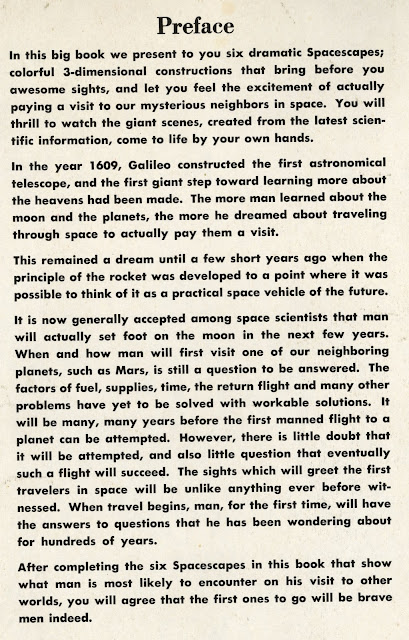A last "goodie" for February. The book is fun but I have a cool piece of ephemera that goes with it.
Here is yet another of the very common space books from the 1950s. There are tons of copies and it must have been in most school libraries. The "AllAbout" series had a number of titles and one of the things about them that sticks in my memories are that under the covers (which were usually gone by the time they made it to the library) they had distinctive hardcover markings. In fact most of you may know this book from this appearance rather than the cover.
Dietz, David. Illustrated by Wilde, George. All About Satellites and Space Ships. New York: Random House. (164 p.) 24 cm. Cloth, DJ. (1958) Allabout Book #28. Also a 1962 edition.
The text covers the 1st two Sputnik launches, the planned X-15 tests, space stations, rocket theory, planned Moon landings and atomic powered space craft.
The vehicles are interesting because they show another set of ideas about what the first craft landing on the Moon would be.
The ephemera part of this post is that I own the printing plates for the title page and the endplate. Since this was reprinted so many times it may be one of several that exist. However as a collector of children's books this is a great artifact of an important book. Here is the close-ups of the cover plate:
And finally this is the image of the endpapers. It is a little hard to see on the plate so I enhanced and false-colored it so you could see the image. If the image looks familiar it is a different version of the one I use behind the title of my blog.
I admit these are not quite the original art or the manuscript but they made me happy.



























































